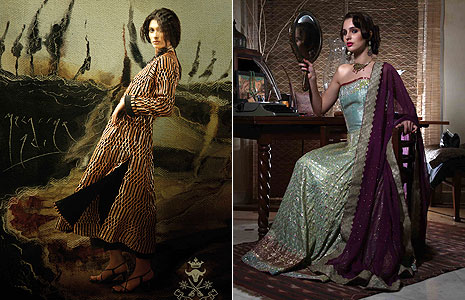
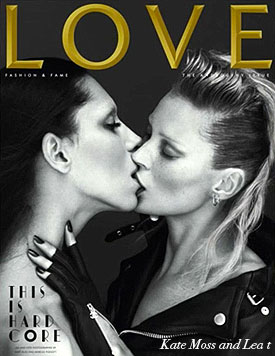 In this century we can see it all over the runways and funways, celebrities strutting care freely, challenging the assigned gender roles and dressing, and the designers mingling handsome with pretty; the phenomenon is androgyny.
In this century we can see it all over the runways and funways, celebrities strutting care freely, challenging the assigned gender roles and dressing, and the designers mingling handsome with pretty; the phenomenon is androgyny.It all started way back in 1920s, what I love to call – Coco Chanel’s era. The fancy free designer notably walked around in her beloved Boy Capel’s blazers and bestowed androgyny to fashion. Later, YSL Le Smoking tuxedo suit for women further blurred the differentiating lines. Moreover, today’s fashion is unlike that painful girdle corset fashion of 20s, it’s more about unrestricted comfort where ‘form follows function’. The biased sexual perceptions and supposed gender roles are irritatingly nostalgic in this world of fast fashion. We all have male and female qualities, why not be able to show both? People are being looked at for what’s in their eyes – their inner sexuality.
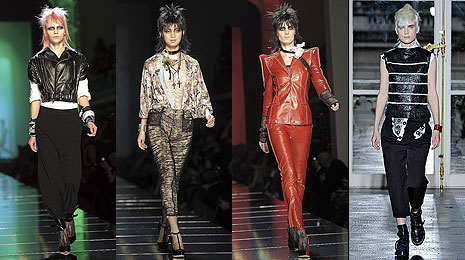
Generally, it’s my impression that truly androgynous clothes are pretty tricky to find – but most androgyny followers achieve their look by mimicking the styles of the gender that they were not born into. So an androgynous biological female might cut her hair short and wear a lot of menswear, and an androgynous biological male might grow his hair longer, shave his legs, and wear more makeup. The idea is not to do it to the point of actually being in drag (not that there’s anything wrong with drag), but just to the point where it’s difficult to tell what gender you are.
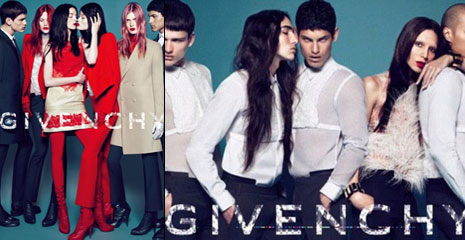
Fashion has always played with androgyny, but lately it has taken a provocative step onto center stage. Remember when Balenciaga sent a bevy of androgynous-looking models, including the fierce Jana K., down the Spring ’11 runway? It transformed the fashion house’s heritage into a plasticised graphic wonderland, combined with cocoon shaped coats, rigid vests and mini skirt. And since then, we’ve seen Lea T. smooching Kate Moss on the Love cover, Armani Prive fall couture 2011 has an androgynous hair do with Asian inspiration,a major moment for the transsexual model who made her debut as the Givenchy muse.Jean Paul Gaultier’s Spring ’11 ad features Karolina Kurkova leaning in for a kiss with a beautiful blonde that looks like a girl, but it’s delicate-looking male model Andrej Pejic. These models are blurring the lines of sexuality and the fashion industry is loving it.

Fashion has always played with androgyny, but lately it has taken a provocative step onto center stage. Remember when Balenciaga sent a bevy of androgynous-looking models, including the fierce Jana K., down the Spring ’11 runway? It transformed the fashion house’s heritage into a plasticised graphic wonderland, combined with cocoon shaped coats, rigid vests and mini skirt. And since then, we’ve seen Lea T. smooching Kate Moss on the Love cover, Armani Prive fall couture 2011 has an androgynous hair do with Asian inspiration,a major moment for the transsexual model who made her debut as the Givenchy muse.Jean Paul Gaultier’s Spring ’11 ad features Karolina Kurkova leaning in for a kiss with a beautiful blonde that looks like a girl, but it’s delicate-looking male model Andrej Pejic. These models are blurring the lines of sexuality and the fashion industry is loving it.

Fashion and music has played important role in bring the change into the life of a modern life Androgyny is in, and it’s about time! The popularity of androgynous dress, was seen in 1980’s copying the styles of Boy George, Michael Jackson, David Bowie, and the Punk scene.

In Bollywood we had spotted Kalki Koechlin,Kareena Kapoor, Soha Ali Khan, Shilpa Shetty, Anuskha Sharma, Sonam Kapoor, Ira Dubey in the androgynous style.
Share |


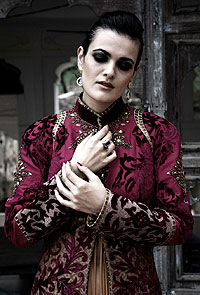 The year 2011 introduced JJ Valaya as a fine art photographer to the world. It is therefore no coincidence that this season’s fashion lines also stand inspired by the evolving palate of the still image; starting with Black & White, Sepia, Natural and finally culminating in todays Digital undertones. This fascinating journey of colors, though distinctly ‘blue-blooded’ Valaya in spirit, also reflects, very subtly, this incredible evolution within the colors.
The year 2011 introduced JJ Valaya as a fine art photographer to the world. It is therefore no coincidence that this season’s fashion lines also stand inspired by the evolving palate of the still image; starting with Black & White, Sepia, Natural and finally culminating in todays Digital undertones. This fascinating journey of colors, though distinctly ‘blue-blooded’ Valaya in spirit, also reflects, very subtly, this incredible evolution within the colors. fashion, the resultant magic ensured the pace for his latest collection for Delhi Couture Week 2011 is not retro, yet remarkably resplendent and glorious. The collection, very holistically, emphasizes fluidity in perfect harmony with the tailored.
fashion, the resultant magic ensured the pace for his latest collection for Delhi Couture Week 2011 is not retro, yet remarkably resplendent and glorious. The collection, very holistically, emphasizes fluidity in perfect harmony with the tailored. 



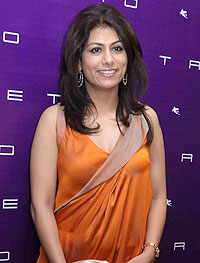 A fashion designer and the creative head of Genesis Luxury Deepika Gehani started her fashion career in the year 2000. Elegance, a quest for perfection, impeccable finish and sophisticated forms are the catalysts that spurred Deepika Gehani to launch her own label.
A fashion designer and the creative head of Genesis Luxury Deepika Gehani started her fashion career in the year 2000. Elegance, a quest for perfection, impeccable finish and sophisticated forms are the catalysts that spurred Deepika Gehani to launch her own label.


















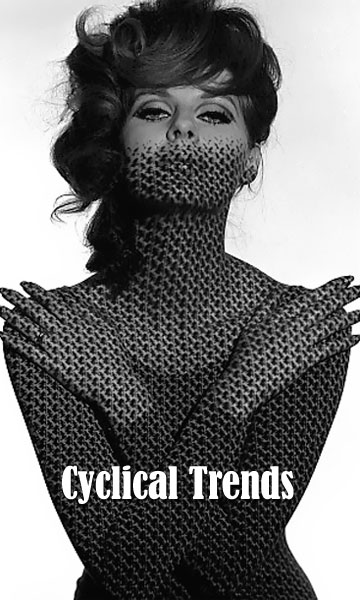









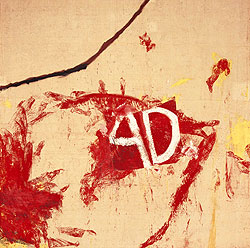 An American artist and film maker has won Golden Globe, BAFTA, Cesar Award & Golden Plam. He is specially known for his plate painting – large-scale paintings set on broken ceramic plates.
An American artist and film maker has won Golden Globe, BAFTA, Cesar Award & Golden Plam. He is specially known for his plate painting – large-scale paintings set on broken ceramic plates.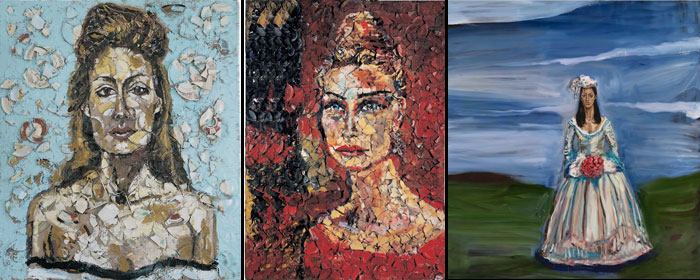

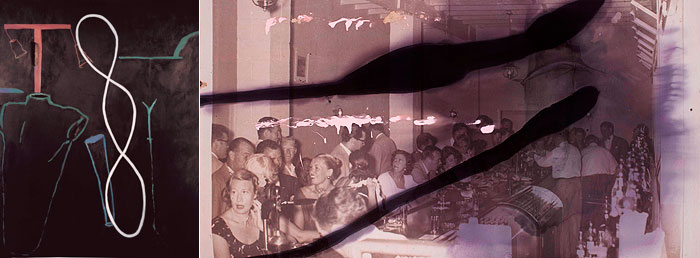

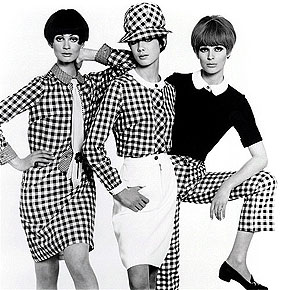 The newly appointed Bill Gaytten of Dior pointed out that Galliano missed the inspirational treasure trove of label. Instead of seeking the archives of Dior, designer kept on creating new innovative techniques. But Bill is all set to sieve Dior’s long fashion camaraderie and rest on its heritage to craft pieces having that vintage element amalgamating with modernity. It made me wonder what is so peculiar about vintage! Are designers uninspired enough to create new? Or, as Mary Quant, the creator of hot pants and miniskirts finds it an imitation, what concocts the beauty of retro?
The newly appointed Bill Gaytten of Dior pointed out that Galliano missed the inspirational treasure trove of label. Instead of seeking the archives of Dior, designer kept on creating new innovative techniques. But Bill is all set to sieve Dior’s long fashion camaraderie and rest on its heritage to craft pieces having that vintage element amalgamating with modernity. It made me wonder what is so peculiar about vintage! Are designers uninspired enough to create new? Or, as Mary Quant, the creator of hot pants and miniskirts finds it an imitation, what concocts the beauty of retro?

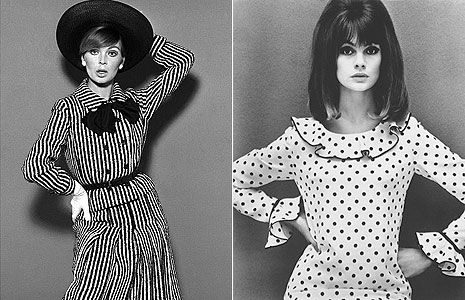

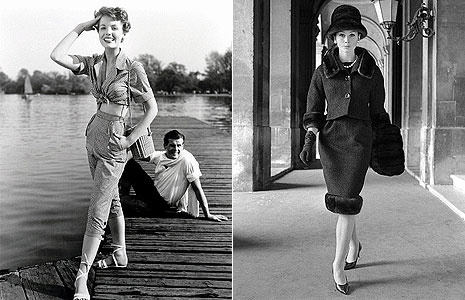
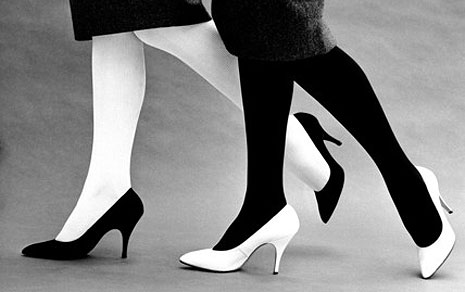

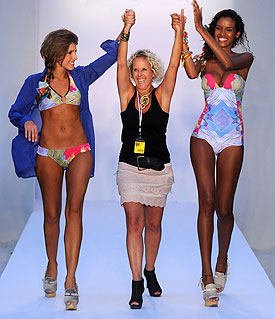 It’s finally beginning to feel like summer,as Models, Celebrities, VIPS and Fashion Industry Insiders migrated to the sands of Miami Beach to see what’s in store for the swimwear industry in Mercedes-Benz Fashion Week Swim 2012.
It’s finally beginning to feel like summer,as Models, Celebrities, VIPS and Fashion Industry Insiders migrated to the sands of Miami Beach to see what’s in store for the swimwear industry in Mercedes-Benz Fashion Week Swim 2012. 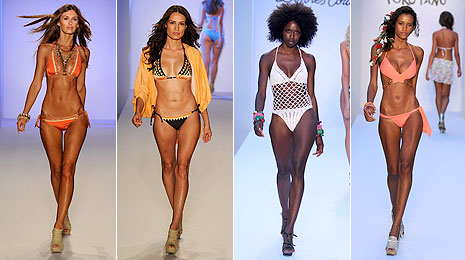
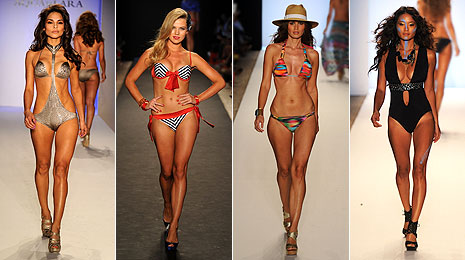

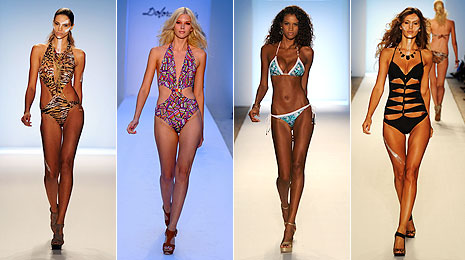
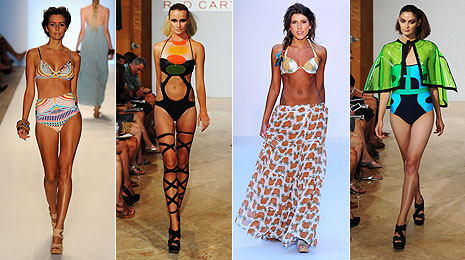
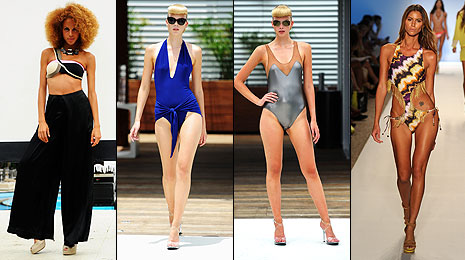

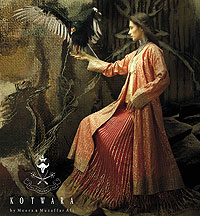 The collection at this Couture Week on 23rd July in Delhi showcases 4 diverse inspirations. Kotwara by Meera and Muzaffar Ali has often used paintings by Muzaffar Ali both as a palette and as a form. This collection opens with pastels by Muzaffar Ali in earthy and natural tones printed on crepe de sheen and chiffon in flowing silhouettes. This is followed by the ikat collection, an evolution of appliqué, inspired by the traditional ikat weave in quilted occasion wear coats.
The collection at this Couture Week on 23rd July in Delhi showcases 4 diverse inspirations. Kotwara by Meera and Muzaffar Ali has often used paintings by Muzaffar Ali both as a palette and as a form. This collection opens with pastels by Muzaffar Ali in earthy and natural tones printed on crepe de sheen and chiffon in flowing silhouettes. This is followed by the ikat collection, an evolution of appliqué, inspired by the traditional ikat weave in quilted occasion wear coats. 